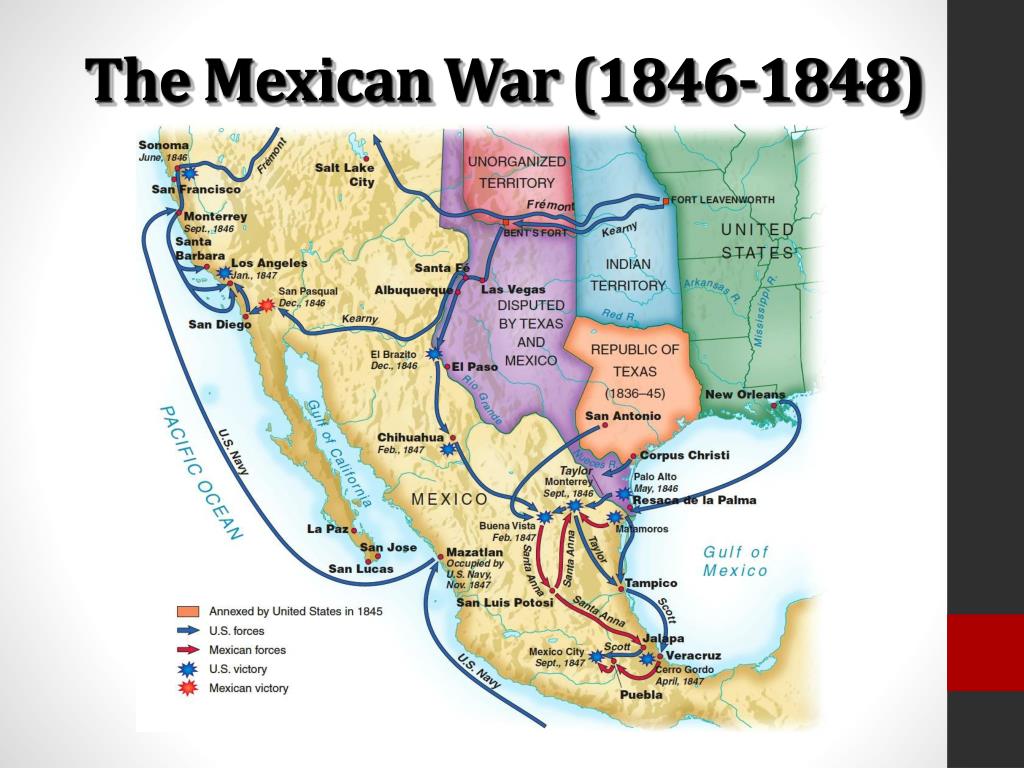

The administration prepared a new army under Gen. Neither American success on the battlefield nor the restoration to power of the deposed strongman Antonio López de Santa Anna brought the expected negotiations. Although an incursion into southern California in August failed, the area was secured by a joint army-navy expedition under Kearny and Commodore Robert F. They linked up with the American settlers there who had established their own government at the urging of the explorer John C.

Sloat occupied Monterey and San Francisco, California. During July, while Taylor's forces gathered, the navy's Pacific squadron under Commodore John D. Kearny led another column from Fort Leavenworth to seize New Mexico. Wool marched from San Antonio to threaten Chihuahua but ultimately joined Taylor. Polk repudiated the armistice, so Taylor thrust south to Saltillo and east to Victoria. John Coffee Hays's Texas Mounted Rifles played a significant role in storming the city's defenses. Taylor, reinforced by a large body of volunteers including regiments of Texans, seized Monterrey in September and declared an armistice with General Arista. Mariano Arista in the Battles of Palo Alto and Resaca de la Palma Initial American strategy called for a blockade of the Mexican coast and the occupation of the northern Mexican states in the unrealistic hope that these measures would lead to an acceptable territorial settlement. Polk seized upon the incident to secure a declaration of war on May 13 on the basis of the shedding of "American blood upon American soil." Meanwhile, on May 8 and 9, Taylor's 2,200-man army defeated 3,700 Mexicans under Gen. On April 25 the Mexican troops at Matamoros crossed the river and ambushed an American patrol.

The Mexican government viewed that as an act of war. Zachary Taylor's army at Corpus Christi to advance to the Rio Grande. What he failed to realize was that even his carefully orchestrated policy of graduated pressure would not work because no Mexican politician could agree to the alienation of any territory, including Texas.įrustrated by the Mexican refusal to negotiate, Polk, on January 13, 1846, directed Gen.

Polk attempted to secure Mexican agreement to setting the boundary at the Rio Grande and to the sale of northern California. On assuming the American presidency in 1845, James K. The conflict between the United States and Mexico in 1846–48 had its roots in the annexation of Texas and the westward thrust of American settlers.


 0 kommentar(er)
0 kommentar(er)
